

Fundamentals of Pain Relief: The mechanism of Action Acupressure.
Fundamentals of Pain Relief: The mechanism of Action Acupressure.
It is not merely a physical experience but a very personal and intricate experience that influences the way human beings move, think, sleep and live their normal lives.
The experience of some types of pain is only temporary and therefore treatable within a short period of time, whereas some types of pain are chronic and may last months or even years, making the sufferer live in constant pain.
Modern medicine has several pain management techniques through drugs or even surgery, but these techniques are often limited due to side effects, addiction, or inefficacy.
Acupressure has been one of these therapies with a special talent for curing the pain in unison with the ancient knowledge and the contemporary science.
It fills the divide between natural healing capacity and modern pain management methods offered by the body. Acupressure provides a more balanced mode of recovery since it treats the root causes as well as the symptoms of the disease.
This blog discusses the fundamentals of pain and the various types of pain, the traditional methods of alleviating pain and gives an overall perspective of acupuncture.
It talks about the mechanism of Acupressure, what science has been able to learn about it, and what it can do to be incorporated in the overall pain management programme.
Understanding Pain
The body is telling the person that there is something wrong with it through pain. Nonetheless, it is much more complex than a mere alarm system.
It is a complex system of nerves, the brain and the spinal cord circuitry that receives the signals and reacts to them. Two people having suffered the same injury may experience it differently depending on the emotional state, level of stress, past experiences, and health status.
Nociceptors are pain receptors that are activated when tissue damage or irritation takes place. These receptors transmit signals to the nervous system to which the nervous cord and brain connect.
After the brain gets the signal, it makes an analysis, matches it with the previous experience and produces the feeling of pain.
The experience can be enhanced by emotional aspects like anxiety, fear, and stress and be diminished by emotional aspects like relaxation and positive emotions. This is the point at which both the body and the mind must be put into consideration in the management of pain.
Acute and Chronic Pain
Doctors categories pain into two broad categories, namely the acute and the chronic. Acute pain comes about quickly, usually following an accident, operation, or infection. It is straight, acute and directly attributed to a particular cause. Acute pain normally disappears once the wound is healed or once the infection is clear.
Chronic pain, conversely, cannot heal according to the anticipated time. It can be many months or even years, and in some cases the source initially used does not exist anymore. Arthritis, migraines, fibromyalgia and nerve-related pains are classical examples of chronic pain.
The chronic pain is especially difficult, as it usually alters the nervous system itself. The pain signal pathways grow more sensitive and add to the discomfort even at times of no new injury.
This is referred to as central sensitization which increases the difficulty in managing the pain. It describes the reason why individuals with chronic pain could experience discomfort with the slightest stimulus that would not otherwise bother other individuals.
Traditional uses of pain relief methods.
The subject of pain is extensively treated in modern medicine, with all modalities focusing on various aspects of the experience. Opioids are stronger medications used when the pain is severe and have risks of tolerance and dependency and have serious side effects. In particular cases, muscle relaxants and topical ointments can also be applied.
Alongside the usage of drugs, physical therapy is considered one of the bases of pain management. Assisted exercises, stretching, and strengthening are used by physical therapists in helping the patient towards gaining mobility, improving his/her posture, and preventing injury.
Other preventive measures that are effective in the prevention of pain are the lifestyle changes, which include improvement of sleep, reduction of stress, and ergonomic intervention.
Surgery can be an option in those instances in which the cause of pain is structural problems like herniated discs or injury to joints.
It is, however, not that surgery is without its own dangers and not all patients could be operated. These traditional therapies are useful, and they are not always full of relief.
Long recovery periods, side effects and long-term treatments have many patients seeking complementary therapies. In this regard, acupuncture has acquired a fine reputation for being a safe and effective choice.
Acupressure: An Ancient Form of medicine.
Acupressure is an example of a Rishi Muni medicine that is thousands of years old. Its main premise is that the body is full of vital energy, also termed 'prana', which circulates throughout human body. In case this flow becomes obstructed or unbalanced, illness and pain follow.
When acupressure is done onto strategic points, a state of balance is regained and results in natural healing. This explanation might appear abstract, but the usefulness of acupressure was noticed over centuries.
In the course of time, the practice has gained global dispersion, molding itself to suit the varied cultures and healthcare systems.
Acupressure has many styles being practiced today, with the Indians, Chinese, Japanese and Korean being a few. Its applications are further extended to modern variations like Acupuncture, electroacupuncture, moxibustion which involves the passing of a mild electrical current through the needles, and moxibustion, which involves heat.
The mechanism of relieving pain in Acupressure.
Research and Development in Acupressure!
There are research institute which constantly doping research in acupressure and implementing it to thousands of patients and recoding and analyzing the results. Now there are different forms of Acupressure developed under which Acupressure is done through Seeds, Magnets, Electro Acupuncture, Acupuncture.
Mainly if we talk of noninvasive method then Seed and Magnets comes on the top.
Seed Therapy: Seeds have bio energy, that is why plants and trees come out of small seeds. So, when body bio energy is disturbed then we use seeds on specific points by sticking in special way so that energy transfer happened and body bio energy points get activated and rest body is intelligent it takes care and help in pain relief and other illness.
Magnet Therapy: Similarly, magnets are stick to the points specially in hands or feets. As we know earth has very strong magnetic field, so by using very small magnest or seed we use the earth magnetic field and activate the body bio energy points and balance the bio energy of the organ.
The science has shed some light on the mechanism of Acupressure with regard to the biological processes. This stimulation conveys information to the brain and the spinal cord, which in turn produces a sequence of consequences which deal with the perception of pain.
Acupressure has been found to have one of the most influential effects on the endorphin release in the body, which is the natural painkiller. These medications are mood elevators and pain relievers.
This shows that Acupressure does not just have an impact on the physical state of pain but also on the emotional and psychological state.
Scientific Evidence
Over the last several decades, acupuncture has been researched in a variety of clinical trials and scientific reviews. The results have always given a picture that acupuncture can be effective in specific types of pain or chronic pain in particular.
Among the findings of the study are some findings that indicate that acupuncture is good in alleviating pain and improving the performance of patients with chronic back pain, knee osteoarthritis, and stiffness in the neck.
It has also been observed that it lessens the beating and severity of migraine and tension headaches; however, the majority of the research provides evidence that genuine acupuncture can be advantageous, as even the placebo version of the treatment is likely to generate an impact.
Patients report about the improvement in the level of pain and the quality of their sleep, mood, and quality of life in general. This implies that there is a multi-dimensional advantage in acupuncture beyond temporary relief.
Well-Responding Types of Pain.
Acupuncture has been particularly successful in musculoskeletal disorders like chronic backache, neck and shoulder tensions and joint disorders. Individuals with migraines or headaches experience a decreased and less severe number of occurrences upon regular visits.
Women who experience painful menstrual cramps also have been helped greatly. In such situations as fibromyalgia or pain with nerves, acupuncture would not completely eliminate symptoms, but in most cases the symptoms would be minimized and the day-to-day functioning would be enhanced.
Despite the great potential of acupuncture, it is not a pillar in any way. Acupuncture should not be used instead of conventional therapy but should be used with it in the situations when pain is caused by serious structural traumas or progressive diseases.
It is designed to help the mind become more comfortable and less dependent on drugs and promote well-being in general.
Safety and Considerations
Acupuncture medical practice is claimed to be safe provided that it is done by a professional. The needles are single use and very thin therefore decreasing the possibility of infections.
Patients have little or no pain or discomfort in treatment, and any side effects are usually mild, like slight soreness or bruising at the point of insertion.Acupuncture is extremely rare but can cause serious complications in case it is performed by unqualified people.
This is why a qualified and competent practitioner with good hygiene should be selected. Individuals who have the bleeding disorders or are on a drug that could thin their blood should consult their medical practitioners to see whether acupuncture can be used or not.
The expectations during a session.
The very idea of needles may be scary to many patients with their first encounter. Acupuncture needles are, however, much finer than the needles utilized when making injections or blood draws.
The majority of the individuals experience the transitory prick/tingling when the needle is inserted. The usual patient complaint is that they feel relaxed, warm, or some sort of pressure when the needles are placed so that the patient can simply relax or may even sleep. Rich treatments last between 20 and 40 minutes, whereby the patient is able to relax in peace or even sleep.
The sessions needed depend on the condition under treatment. Even acute pain can be improved with only several treatments, whereas chronic pain can be a long-term affair with a series of frequent sessions.
How to pick the appropriate Online website to treat pain in short span of time.
Identifying the practitioner is one of the critical points toward the optimal outcomes. But these days online digital tools/websites are often used at the comfort of home.
Allopathic Medicine: Usually online websites provide online consultancy, under which Online doctor or therapist an expert acupressure therapist will start with a detailed consultation wherein he/she will enquire about your health history, lifestyle and the current symptoms and provides the names of the medicine/drug to consume by the paitent. These days medicine delivery is also online available. But usually people complaint about the side effects of the taking medication, some does not even realize that they have side effects of the medications.
Ayurvedic Medicine: But here I would like to mention there are many websites which offer Ayurveda consultation, but as the expertise are in question because the actual methodology of Ayurveda is that you go to Ayurveda expert and he checks your nadi and make fresh powder of Ayurveda medication. Which is given to the paitent and that paitent has to follow-up physically. But today even Ayurveda medicines are manufactured and stored n plastic packing and even people don’t realize that Ayurveda also has expiry date they think this is ayurvedic medicine so they can take even after expiry.
Acupressure Therapist: www.livecure24.com
A practitioner should also be chosen by their identified training and certification and also positive feedback from former patients.
An acupressure therapist will also teach you what to expect, and all your questions will be answered by a good acupuncturist, and he or she will make you feel comfortable during her or his work. Communication and trust are important because they will enable you to take an active part in the process of healing.
The Stress and Perception of Pain.
Both are closely related to stress and pain. The hormones, like cortisol and adrenaline, are released in case the body is under stress, and they prepare the body to fight or even flight.
Although this is a good reaction to emergency situations, persistent stress keeps the body on extreme alert. There is no relaxation of muscles, and the blood circulating can be limited, as well as nerve sensitivity can be heightened.
Therefore, pain is stingy and not readily manageable. The process of acupuncture is capable of controlling this stressor system, with overstimulation finally declining the opposition of symptoms of stress, in addition to promoting the emission of endorphins, which participate in the inherent calming influence and analgesic impact on the nervous system, and computerization of moods.
Reduction of Inflammation and Acupressure.
Normal body defense against injury or infection is inflammation, and in case this becomes chronic, it adds to pain. Persistent inflammation can be associated with such conditions as arthritis, tendonitis or even back problems.
Acupressure has also been found through research to decrease inflammatory markers in the body, which implies that it goes to the heart of the problem of long-term pain.
Acupressure can make the body heal itself, and the body moves; thus, swelling and stiffness are minimized, facilitating much easier movement and making life more comfortable.
Pain and Sleep: A Two-Way Relationship.
Sleep is necessary to get a healing process, and pain usually disrupts it. A large number of individuals experiencing chronic pain complain of having problems with falling asleep, sleeping, or getting up feeling refreshed.
Sleep deprivation, in its turn, is known to make a person more sensitive to pain, which is a painful cycle that is not easily broken.
Acupuncture would assist in that it enhances deeper, more beneficial sleep. It acts by making the sympathetic and parasympathetic nervous systems work in balance, promoting the body to move to a rest and recovery state.
As sleep is enhanced, people tend to have less pain perception, which gives them increased energy and strength in their lives.
Acupressure versus Traditional Pain Relief.
Traditional pain control procedures are usually aimed at dulling the pain signals on a short-term basis, whereas Acupressure aims at restoring the balance as well as addressing the imbalance.
As an example, analgesics can take effect in a few minutes; however, they wear off and can even result in addiction. Instead, Acupressure is rather gradual. It does not conceal pain, but it restrains the nervous system, decreases inflammation, and enhances blood circulation.
A good thing is that many patients find that when a series of sessions has been done, their level of pain and the duration of the pain are reduced with fewer side effects. This renders Acupressure a safe and long-term management alternative.
The Acupressure and Wellbeing of Emotion.
Suffering is no longer an evolutionary aspect but an emotional aspect. The long-term pains can lead to frustration, aggravation, or depression.
One of the means to cope with this mind-body relationship is acupuncture, as it may be applied to encourage the points related to the feeling of emotional equilibrium.
Modern research claims that acupuncture can have a chance of controlling such neurotransmitters as serotonin and dopamine, which are capable of controlling mood.
Emotional well-being increases the ability of the body to handle pain, and thus, the connection between pain exacerbating stress and stress exacerbating pain ceases.
The organization of Acupressure sessions.
The normal session of Acupressure starts with an intensive consultation. The practitioner will enquire about the place, severity and quality of the pain, although lifestyle issues like sleep, digestion and level of stress will also be investigated.
This is due to the fact that Acupressure considers pain as a part of the balance of the whole body. This is followed by insertion of fine and sterile needles at points of careful selection.
Such needles are very fine in nature and usually do not produce much or any discomfort. The majority of the individuals complain of a mild tingling, warmth, or relaxation.
Sessions can take between 1 and 2 minutes, and the frequency is also dependent on the condition being treated. More acute pain can be treated within several sessions, whereas more chronic challenges can take continual treatment.
The complementary practices which can improve acupuncture.
It could also be reduced through consuming a balanced diet with a high content of anti-inflammatory foods, which include fruits, vegetables, and omega-3 fatty acids.
When Acupressure is added to these practices, it will compose a holistic model of pain management beyond symptom management and encourage health.
Acupressure to treat pain: The long-term benefits.
Acupressure has a lot of potential, and one of the factors that can enable it to bring long-term benefits is its capacity to do so. As opposed to quick fixes, which fade away, Acupressure strives to re-establish the body pain response in the long run.
Most people who undergo a course of treatments report not only improvement of their main pain condition but also in their energy levels, sleep, digestion and mood.
This larger meaning of wellness helps in enhancing a more comfortable life ahead and helps to minimize the risk of future pain being too much.
Acupressure and Better Circulation.
Good circulation of blood is required to form a cure and end pain. Limited blood flow into muscles and tissues results in the deficiency of oxygen or nutrients by such tissues and muscles, which leads to stiff, inflamed, and painful muscles and tissues even after a long time.
The process of Acupressure also aids in decelerating the circulation by activating some points, thus causing dilation in the blood vessels and heightened circulation within the body.
This high circulation impermeably entails enhanced reachability to new blood, which contains oxygen and nutrients for the impacted regions, and waste items and toxins are gotten rid of more efficiently.
This assists in making swelling less, resting of a tight muscle and even speeding the realistic recovery of the body. The circulation enables the management of the circulation in the long term, as it increases the flexibility of the joints, increases the immunity, and improves the overall well-being, too.
When the person is in the state of constant pain, an increment in the blood flow can spell the difference between simply existing with the pain and actually acquiring an ability to move about and live an ordinary life.
Combining acupressure with Other Interventions.
Acupressure has a number of strengths, and one is that it can be used as a complement to other treatments. It does not oppose in any way medications or physical therapy, but on the contrary, it complements their effectiveness.
As an illustration, Acupressure has the ability to reduce high doses of painkillers, thereby reducing the risk of side effects. It can be used together with the physical therapy to enhance the mobility and speed up the recovery.
Using the lifestyle-related measures like exercise, nutritious diet, and managing stress, Acupressure is part of a holistic measure that targets the symptoms and the underlying imbalance that causes pain.
Conclusion
This twist of agony is a complex and even overwhelming experience, but you do not desire one to occupy the larger segment of your life. Acupressure is a safe, natural, and effective form of pain management, which opts to treat the physical, emotional, and neurological aspects involved in discomforts.
It is backed by centuries of experience and an increasing number of scientific discoveries and is a powerful instrument in the pursuit of better health and well-being.
At LiveCure24, the attention is on providing high-quality Acupressure services to help people to find relief, balance, and control in their lives. Whereas pain is unavoidable in some instances, one can overcome the suffering situation by adopting the appropriate strategy and thus live a healthier and more satisfying future.
Feel free to use images in our website by simply providing a source link to the page they are taken from.
-- LiveCure
Share views on Fundamentals of Pain Relief: The mechanism of Action Acupressure.
Please keep your views respectful and not include any anchors, promotional content or obscene words in them. Such comments will be definitely removed and your IP be blocked for future purpose.
 5th May 2025
5th May 2025
 10th Oct 2025
10th Oct 2025
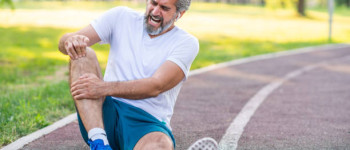 4th Jun 2025
4th Jun 2025
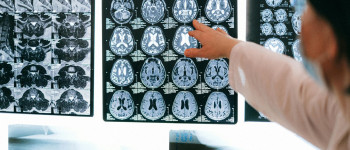 19th Dec 2024
19th Dec 2024
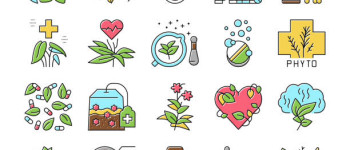 18th Jun 2025
18th Jun 2025
 9th Oct 2025
9th Oct 2025
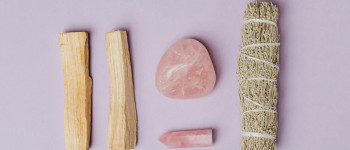 5th May 2025
5th May 2025
 6th Sep 2025
6th Sep 2025
 6th Sep 2025
6th Sep 2025
 19th Dec 2024
19th Dec 2024
 9th Dec 2024
9th Dec 2024
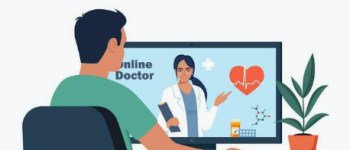 8th Sep 2025
8th Sep 2025
 2nd May 2025
2nd May 2025